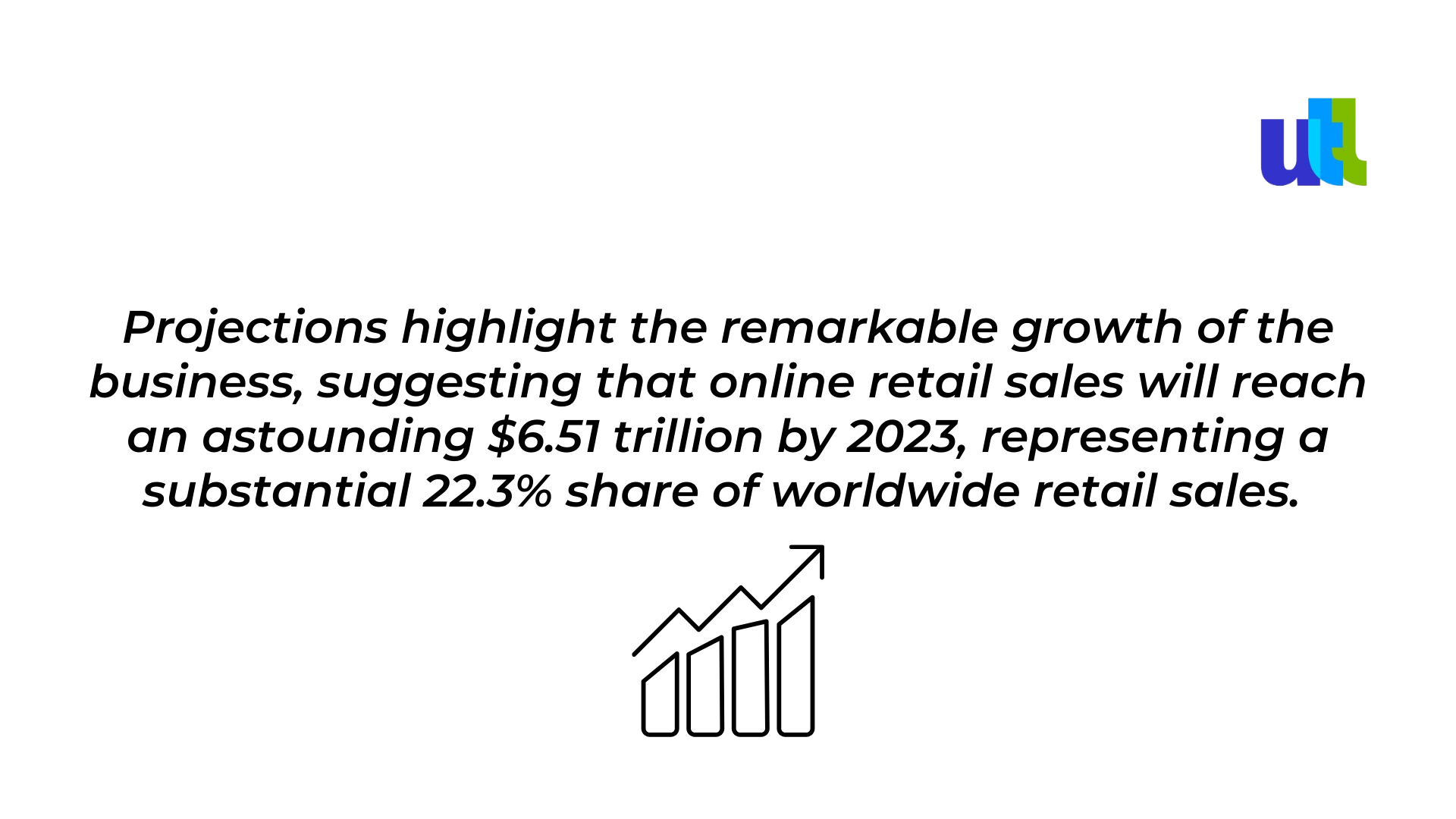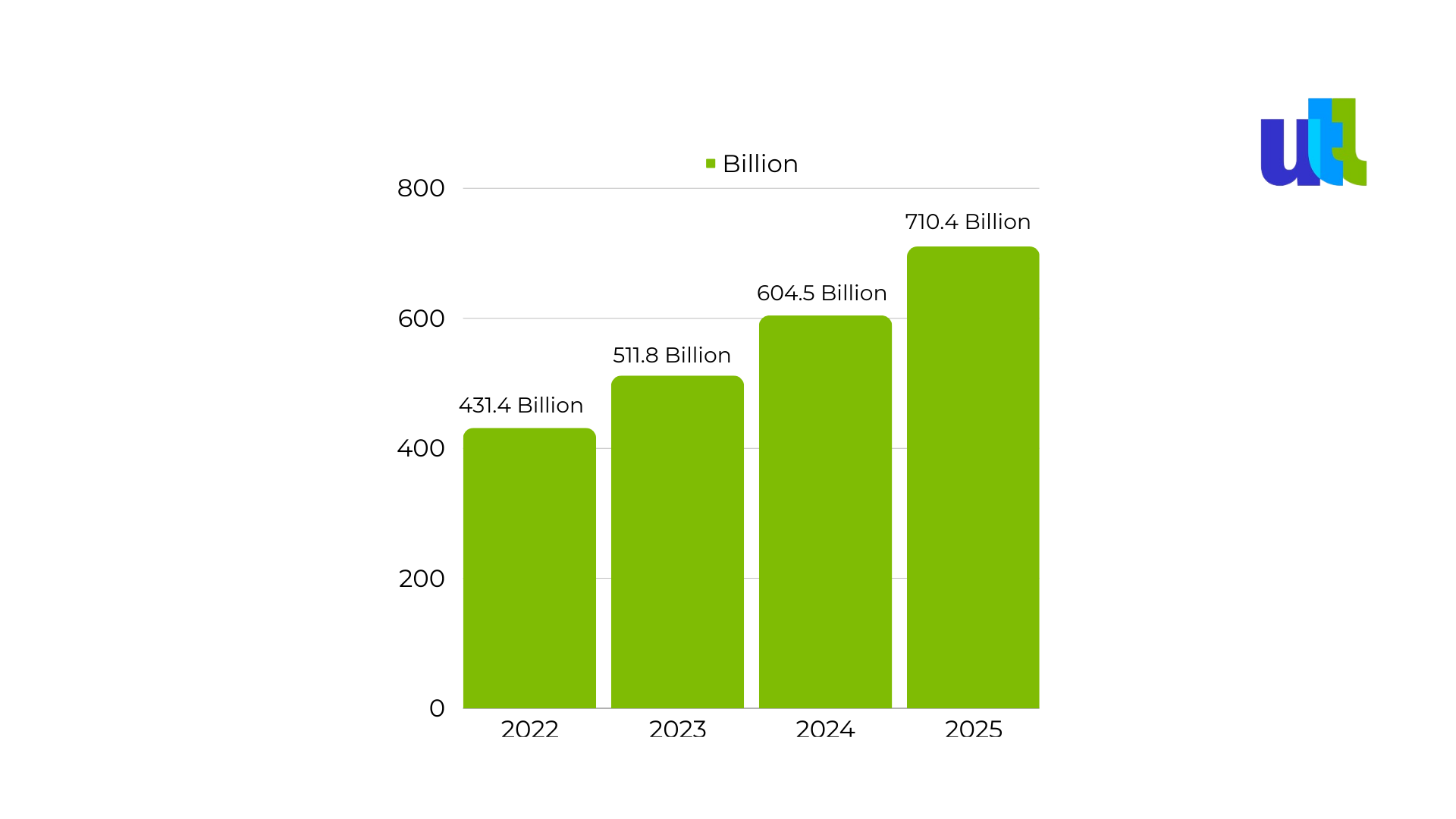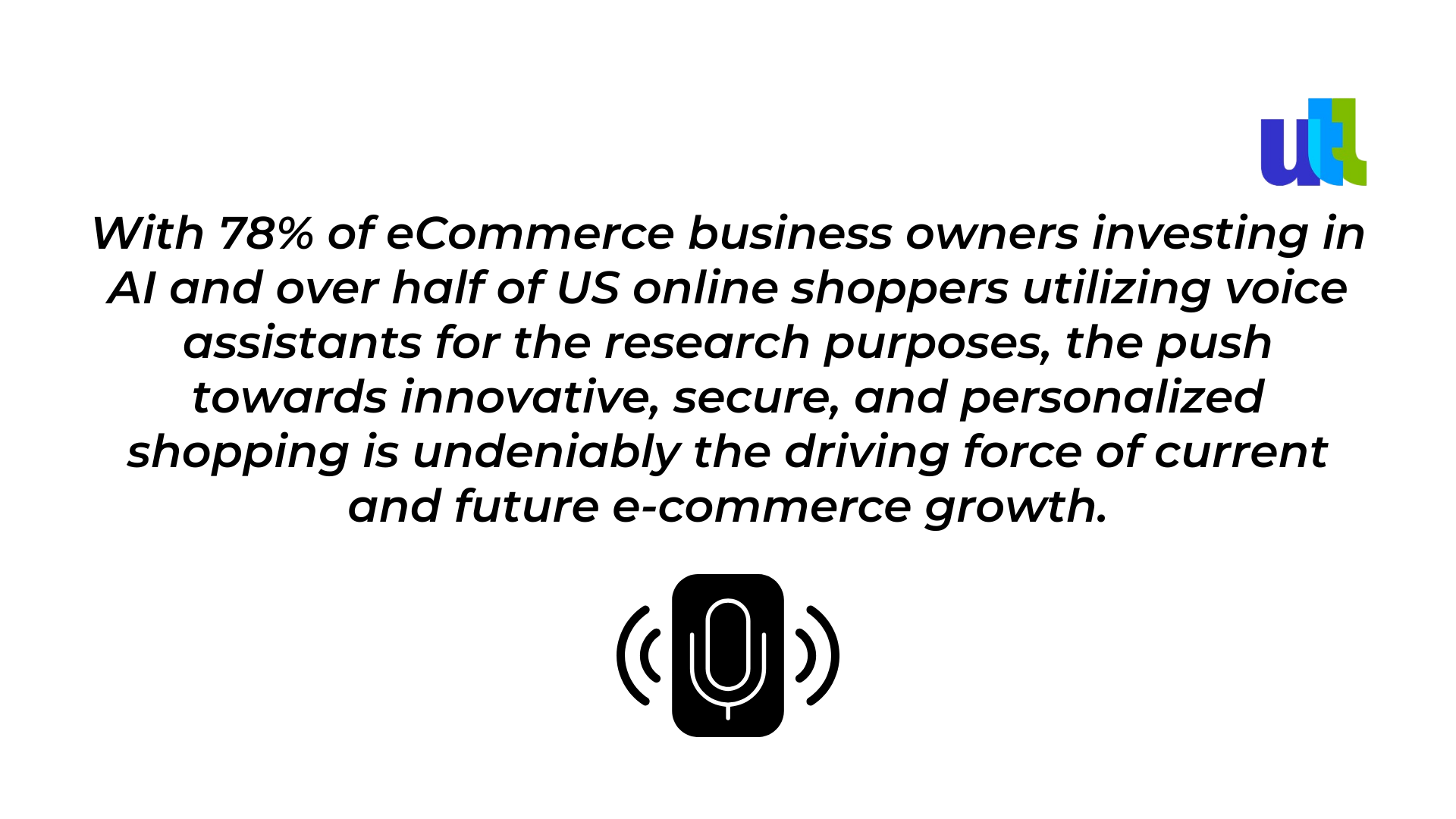In an age where digital connectivity defines consumer behavior, e-commerce has become synonymous with convenience, accessibility, and personalized retail experiences. The spread of digital shopping has effortlessly integrated into the daily life, leading in a revolution that reshapes how the retail sector operates and fulfills ever-evolving consumer expectations. As we witness a seamless blend of technology with user-centric design, online shopping platforms are advancing, offering more adaptive and bespoke experiences to suit the bustling schedules and unique preferences of today's consumers.
Standing tall in the virtual marketplace, e-commerce breaks down the constraints that traditional retail formats once presented and opens up a world of possibilities for both consumers and businesses.

These figures demonstrate the enormous potential that digital commerce offers in addition to its expanding influence.
The revolutionary wave of mobile commerce represents a critical breakthrough, with mobile sales hitting previously unheard-of heights. The way that mobile technology has merged with daily life has completely changed how consumers interact with brands, and this has made mobile interfaces essential to the present and future of online retail. The shift to mobile-first commerce is supported by user-friendly designs and cutting-edge technologies that provide a safe and easy shopping experience.
This article aims to delve into the strategic elements of crafting an uninterrupted online shopping journey, and identify forward-thinking approaches to refine the consumer's e-commerce experience. With thorough research and expert insights into trends and future growth projections, we invite you to explore the enduring potential that e-commerce and mobile commerce hold for the evolving digital retail environment.
Mobile commerce accounted for more than 431.4 billion in sales in 2022. And it’s projected to increase even further to 511.8 billion in 2023, 604.5 billion in 2024, and 710.42 billion in 2025.

Designing for the customer
The significance of a user-centric design in e-commerce cannot be overstated. An engaging User Experience (UX) that increases consumer satisfaction, improves conversion rates, and fortifies brand loyalty is the foundation of a successful online marketplace. Given the abundance of digital storefronts available to consumers, an e-commerce site needs to be simple, visually appealing, and easy to use to and provide a cohesive shopping experience. Clear product descriptions, visually appealing photos, and easily accessible search features that facilitate quick navigation and decision-making are crucial to this smooth user experience.
Personalization
Personalized purchasing experiences are customized to meet the specific demands of each user, adding a personalized touch that increases consumer value and engagement. Due to technological and analytical advancements, online wholesalers may now personalize their customers' shopping experiences by presenting offers and product recommendations that are relevant to them based on careful examination of user data. The customer journey is further improved by the strategic application of customer service, safe transaction processing, and simple return frameworks.
Localization
According to Shopify, localization—which includes currency customization—adds a level of comfort and familiarity for customers who are based abroad in the context of global commerce. By celebrating milestones and seasonal events, segmentation and targeted promotions powered by customer-specific data, such as purchase history, enhance the shopping experience. Additionally, purchase probability is directly influenced by providing product accessibility through well-organized categories, current information, and understandable vocabulary using tools like Google Trends.
Artificial intelligence
The future of buying is being swiftly reshaped by innovations in e-commerce, like augmented reality (AR) exhibits and intelligent digital assistants. These advancements promise to enrich the user experience while offering businesses new channels for customer engagement.
Rebecca Minkoff, a luxury handbag designer and Shopify Plus merchant, discovered that after interacting with a product in augmented reality, website visitors were 65% more inclined to place an order. The engagement metrics show that augmented reality (AR) elements that replicate the experience of in-store shopping can significantly improve the likelihood that a user will make a purchase.
Safety
Streamlined procedures like faster checkout alternatives and aspects that build confidence, like security badges, contribute to a flawless checkout experience, which is essential for client retention. Automation in marketing and inventory control can also streamline operations, and regular analytics yield critical information for customized marketing plans and performance monitoring.
Have an analytics strategy to measure success
Businesses must embrace a robust analytics approach to navigate their success paths accurately. Utilizing tools like Google Analytics, companies can gain rough insights into customer behaviors—such as geographical location, most-visited pages, and interaction hotspots on their website. Meanwhile, e-commerce platforms like Shopify offer built-in analytics to help track performance and measure the effectiveness of marketing strategies. Beyond offering a compelling product range, establishing a solid website and e-commerce infrastructure is pivotal in converting browsers into buyers. Companies should extend these best practices across all digital touchpoints, including mobile apps and social media channels, enhancing their physical store experiences to create a truly integrated customer journey.
E-commerce has undoubtedly revolutionized retail by delivering unmatched convenience and access. It expands a business's reach, allowing even small-scale enterprises to penetrate the global market. Nevertheless, the shift also demands retailers address logistical complexities, cybersecurity, and brand consistency. Success in this new digital landscape requires retailers to be flexible, innovate, and place customers at the center of their strategic planning. As the retail sector moves forward, integrating e-commerce with conventional models, retailers are positioned to succeed in this rapidly evolving marketplace.
The integration of emotional intelligence in e-commerce
The integration of emotional intelligence in e-commerce is reshaping the way IT companies approach online retail. Understanding and managing emotions to create resonant shopping experiences is pivotal for nurturing customer engagement and loyalty. Technologies such as Augmented Reality (AR) and Virtual Reality (VR) enhance the sense of e-shopping, allowing for virtual try-ons and immersive previews that facilitate informed decisions, elevating customer satisfaction, and reducing return rates. Voice commerce, powered by AI assistants, streamlines search and transaction processes, enabling a hands-free and personalized shopping experience.
Furthermore, IT advancements in checkout and payment methods play a critical role in enhancing e-commerce platforms. One-click checkouts, payment information storage, and alternative payment options like digital wallets and "buy-now-pay-later" offerings minimize transactional friction and bolster security, thereby increasing consumer trust and transactional ease. Artificial Intelligence (AI) brings sophisticated personalization to the forefront, analyzing customer data to offer tailored recommendations and employing chatbots for responsive and personalized support.
Additionally, with predictive analytics, businesses can foresee and adapt to market trends, improving responsiveness to customer demands. The cooperation of Voice Commerce and the Internet of Things (IoT) points towards a future where shopping is effortlessly integrated into the smart fabric of everyday life, allowing for a fluid transition between needs and their fulfillment. As we pivot towards advanced payment technologies, including biometric authentications and cryptocurrencies, IT companies advocate for their adoption to remain at the cutting-edge of secure and seamless online retail experiences.

Conclusion
In summing up the insights on e-commerce evolution, it is essential to recognize that we stand on the brink of a new era in online shopping—an era characterized by technological sophistication and a keen focus on consumer satisfaction. For IT companies, the opportunity lies in harnessing these technological advancements to cultivate shopping platforms that are not only intuitive and engaging but also smartly integrated with emerging trends like AI, AR/VR, and advanced payment solutions. It's imperative to continue refine such approaches, ensuring that e-commerce solutions resonate with the dynamic demands of modern consumers and lead the charge in marketplace innovation.
Our commitment is to support this digital shift, equipping businesses with the tools necessary to provide a seamless and enriched online shopping experience. As we guide our clients through this evolution, we encourage all stakeholders to embrace these changes with enthusiasm and foresight, positioning themselves advantageously at the frontline of e-commerce excellence.
For free consultation on ecommerce website, click here.
----------------------------------------------------------------------------------------------
View the full presentation:
WRITTEN BY
Milda Butkeviciute
2023-11-14














































































































































































